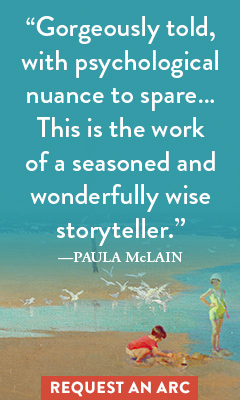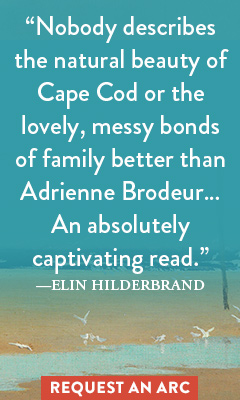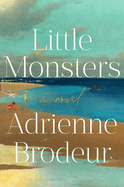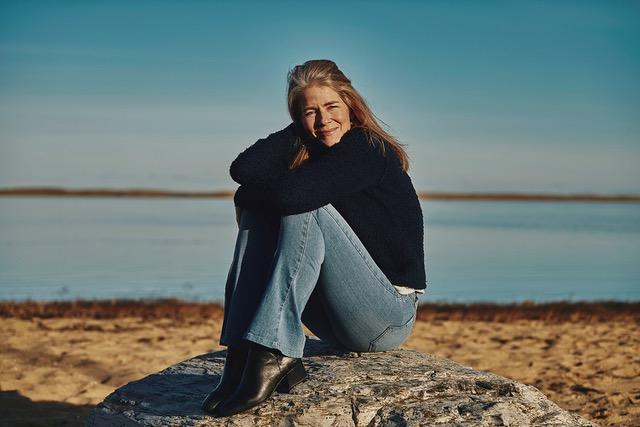Little Monsters
by Adrienne Brodeur
The epicenter of Adrienne Brodeur's Little Monsters--a compelling, earnest portrait of a family more fractured than its members realize--is one aging white man, jostling for purchase in the percolating tensions of pre-election 2016. He refuses to be left behind in the assumed wave of liberalism, for reasons both personal and professional. He still has genius in him. He is not, perhaps, a character that's easy to love. But he is easy to recognize. Adam Gardner, this patriarch speeding toward septuagenarian status, is a brilliant scientist, a charming conversationalist (if not always a politically correct one), a widower since his children were small, and a single father, confident that he was also a good one. His children, Ken and Abby, love him dearly, but they're less convinced.
Real estate mogul-turned-conservative politician Ken has done his best to slough off the loneliness and embarrassment of his childhood, choosing to relegate the fallout of Adam's manic-depressive episodes to a dark corner of his mind. Artist Abby confronts these same confusing emotions more directly, as symbols and glyphs in her latest spate of buzzy paintings. As Adam's 70th birthday party approaches, both children hatch secret plans to win over their difficult-to-impress father, while Adam himself quietly swears off his bipolar medication in pursuit of one final Nobel Prize-worthy breakthrough. At the fringes of this patchwork quilt of relationships is Steph, a cop who becomes interested in the Gardner family when she realizes they're capable of illuminating a long-buried secret of her own.
Through shifting points of view in each chapter, Brodeur explores the voices of the Gardners and their circle: envious and disciplined Ken; perceptive but distant Abby; sharp and demanding Steph; and grandiose but erratic Adam. It is Adam, above all, who speaks to the themes of the tension in Little Monsters: he's a man who thinks himself king, and fails to understand why that mentality might sow anything but worship in those around him. "How was it possible that all these people--'extras,' as it were, on the set of his life--believed they had experiences and emotions as rich and complex as his own?"
Thankfully, Brodeur--back with her first book since her 2019 memoir, Wild Game, and her first novel since her debut, Man Camp--absolutely does believe that every "extra" has a place on the stage, and she does not short-change readers on the complexities of these characters' emotions. Even Ken, in all his Angry White Man glory, is rendered through a compassionate lens; his complaints and excuses rankle, but bent through a ray of therapy, they almost start to make sense. To be sure, the cast of Gardners in Little Monsters don't all share equal legitimacy in their frustrations. But as the conflicts balloon ahead of Adam's big party, readers will know they have all sides of the story.
Another character lurks in the background of Brodeur's novel, and that is the Cape Cod setting itself. Each protagonist shares a profound connection to the shoreline, whether intimate or adversarial, and Brodeur pauses often to describe wisteria blooms and whale blows, the habits of snapper turtles and seals, with an Edenic reverence. These descriptions can feel tangential until readers recognize how naturally each Gardner aligns with nature itself. That Garden of Eden comparison is no throwaway: Ken and Abby mirror the ancient siblings Cain and Abel in more ways than one. (At one point, Ken's therapist even recommends he pick up John Steinbeck's East of Eden for insight.)
Throughout Little Monsters, art and nature mirror each other, symbiotic and inextricable. Abby paints her family as a new life grows inside her. Ken builds a tiny home replica as the coast of his real home gives way to erosion. Adam studies the musical language between whales as he struggles to recognize the cries of his own children. Steph nurses her baby as she demands answers from her own parents. The parallels, and their respective ironies, are beautiful and heart-breaking.
In one scene, Ken's wife, Jenny, peers at a fresh painting of Abby's, one she intends to give Adam for his birthday. "Each time she blinked," Brodeur writes, "lines would recede and advance, creating images that would mutate like shapes in clouds: a tiny being blossoming in a torso; an iris-like aperture overlaying the whole; two children tangled in a curious knot." All of the characters in Little Monsters are mutating in this manner, grappling to understand the twisting political landscape and how it will define their lives in the months and years to come. But they are also each tangled with one another, and the true pleasure of Brodeur's novel is in watching some--though not all--of them get unstuck. The greatest relief comes in witnessing the women and the men eventually assessing one another from a distance, so that both groups, at last, can heal. --Lauren Puckett-Pope








